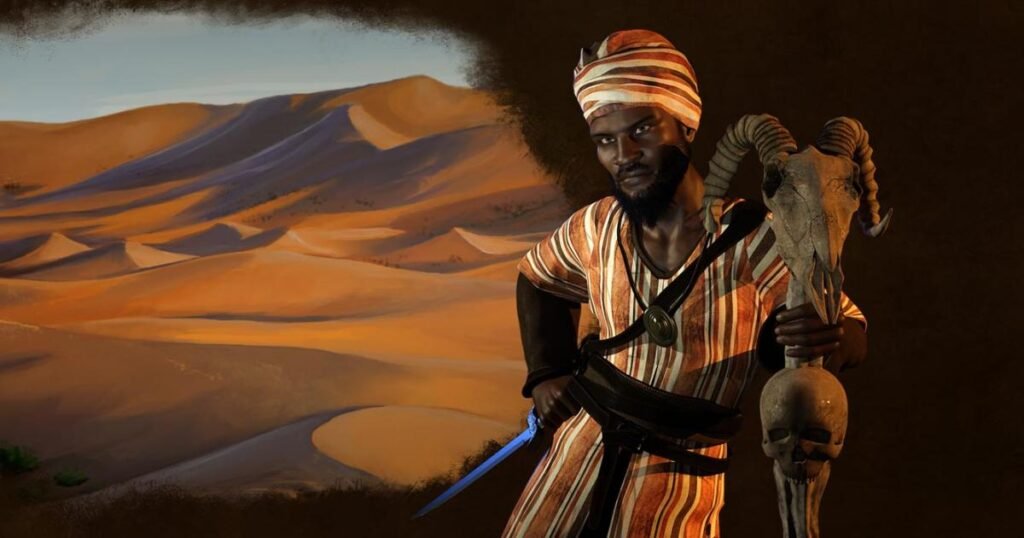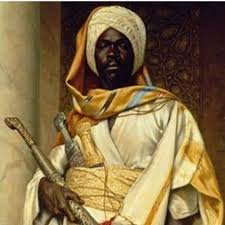Sundiata Keita was the first ruler of the Mali Empire in the 13th century C.E. He laid the foundation for a powerful and wealthy African empire and proclaimed the first charter of human rights, the Manden Charter. He founded the powerful Mali Empire. Known for its progressive values and their wealth, it followed Ghana as the next great West African empire.
Sundiata Keita, whose name means Lion Prince, was born early in the 13th century to a noble family within the Malinke tribe. The Malinke kingdom, Kangaba, was part of the Ghana Empire of West Africa. Oral stories about Keita say that he was a sickly child or suffered from some sort of physical impairment. This explains why, when his brothers were killed by the rulers of Ghana, he was spared. Eventually, he became a local leader of the kingdom of Kangaba.
The Malinke people were from the small kingdom of Kangaba, near the present Mali-Guinea border. Little is known about his early life. Malinke oral traditions indicate that he was one of 12 royal brothers who were heirs to the throne of Kangaba. Sumanguru, ruler of the neighbouring state of Kaniaga, overran Kangaba at the beginning of the 13th century and murdered all of Sundiata’s brothers. According to tradition, Sundiata was spared because he was a sickly boy who already appeared to be near death.

Sundiata Keita established the territorial base of the empire and laid the foundations for its future prosperity and political unity.
It is believed that Sundiata was once a dugu-tigi, or headman, of one of the villages of Kangaba. He organized a private army and consolidated his position among his own people before challenging the power of Sumanguru and the neighbouring Susu people. He defeated Sumanguru decisively in the Battle of Kirina (near modern Koulikoro, Mali) at about 1235 C.E. and succeeded in forcing the former tributary states of Kaniaga to recognize his suzerainty. In 1240 Sundiata seized and razed Kumbi, the former capital of the Sudanese empire of Ghana, and by this act succeeded in obliterating the last symbol of Ghana’s past imperial glory.
Sundiata Keita’s Conquests
When the Ghana Empire tried to impose trade restrictions on the Malinke, Keita began a revolt. He managed to unite several peoples of West Africa to fight against Ghana’s then king, Sumanguru; he defeated Sumanguru at the battle of Kirina in 1235 C.E. After that, Keita’s generals began to conquer other territories in West Africa. He called his new kingdom the Mali Empire, which would become one of the richest empires in the world.
Keita’s victory over Sumanguru marked the beginning of the Mali Empire. Keita decided to rebuild the then-destroyed city of Niani near the Sankarini River as his new capital. This area soon became a hub for African and Arab traders. The Mali Empire grew wealthy due to its control of trade routes as well as its significant gold and copper resources.
The Mali Empire, under Sundiata Keita, created one of the very first charters of human rights, the Manden Charter, also known as the ‘Kouroukan Fouga’. This is an oral, rather than written, charter, which has been passed down by generations of Malinke. The Manden Charter speaks about peace within a diverse nation, the abolition of slavery, education, and food security, among other things.
Soon after 1240 Sundiata moved the seat of his empire from Jeriba to Niani (also called Mali), near the confluence of the Niger and Sankarani rivers. The lure of profits from the gold trade, made possible by Mali’s acquisition of Wangara, and the tranquillity that prevailed under Sundiata’s leadership attracted merchants and traders, and Niani soon became a key commercial centre in the Sudan.
Sundiata Keita’s Religious Mystery
Besides the Manden Charter, there is a large body of oral stories and legends passed down about Sundiata Keita, which occasionally contradict written sources. Whether Keita converted to Islam is a matter of debate among documentary scholars and those who’ve passed down oral legends. Some believe that Arab traders in the area converted Keita to Islam. Certainly, his descendants were Muslim, and many went on pilgrimage to Mecca (hajj), and Keita’s most famous descendent, Mansa Musa, dazzled Egypt and the Islamic world on his lavish pilgrimage east.

However, the legendary oral tradition that surrounds Keita suggests that he never turned away from his native religion. These oral stories portray Sundiata Keita as a magician and believer in traditional Malinke religion. Some sources also suggest that he was both: Muslim to work with the Muslim merchant class, and a practitioner of traditional Malinke religion to work with the rest of his people. Whatever the case, be it devout Malinke observer, a Muslim convert, or a mixture of both to the most effective administrator he could be, Keita’s personal religious convictions remain a mystery.
Stay tuned for more on Africa’s Rich History, and the Story of Sundiata Keita…




